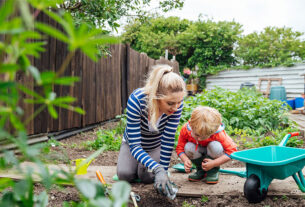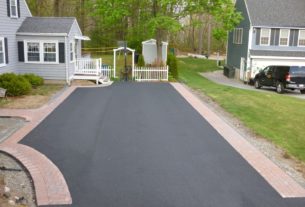 From retirement homes to shopping malls, the way we build is changing. Sustainable construction isn’t just a buzzword anymore—it’s about saving money, making spaces more comfortable, and doing right by the planet.
From retirement homes to shopping malls, the way we build is changing. Sustainable construction isn’t just a buzzword anymore—it’s about saving money, making spaces more comfortable, and doing right by the planet.
So here are 3 worthwhile practices to consider during the construction phase.
Use of Sustainable Building Materials
Choosing sustainable materials is a win-win. It helps the environment by reducing waste and greenhouse gas emissions, and it often means longer-lasting buildings.
And there are different ways to use sustainable building materials. For example:
- Reclaimed wood: Salvage wood from old structures to give it new life and save trees.
- Recycled metals: Use recycled steel and aluminum for structural elements, cutting down on energy-intensive mining.
- Bamboo and cork: Opt for fast-growing materials like bamboo and cork for flooring and finishes.
- Low-VOC or No-VOC paints: Pick paints with low volatile organic compounds to improve indoor air quality.
- Certification and vetting: Look for materials certified by proper authorities for sustainability.
- Supplier partnerships: Work with suppliers committed to eco-friendly practices and transparent sourcing.
Energy-Efficient Design and Construction
Saving energy is not just good for the planet; it’s good for the wallet too. Energy-efficient buildings cut down on utility bills and create more comfortable spaces.
So, it’s a good idea to incorporate:
- Quality insulation: Use spray foam or high-performance insulation to keep heat in during winter and out during summer.
- Smart windows: Install double or triple-glazed windows with low-emissivity coatings for better insulation.
- Solar power: Harness the sun’s energy with photovoltaic panels for electricity and solar water heaters for hot water and orient buildings to maximize natural light and heat, reducing the need for artificial lighting and heating.
- Natural ventilation: Use design features like operable windows and vents to enhance airflow and reduce reliance on air conditioning.
Water Conservation Techniques
Water is precious, especially in drought-prone areas. Conserving water not only saves money but also helps preserve local water resources.
So during construction, you want to consider:
- Rainwater harvesting: Install gutters and storage tanks to collect rainwater for non-potable uses like irrigation and toilet flushing and use pumps and pipes to distribute collected rainwater efficiently.
- Efficient fixtures: Install faucets, showerheads, and toilets that use less water without sacrificing performance and opt for toilets with dual-flush options to save water depending on the waste type.
- Smart landscaping: Design landscapes with native, drought-resistant plants that require less water and use drip systems to deliver water directly to plant roots, reducing evaporation and runoff. You also want to treat and reuse greywater from sinks and showers for irrigation, minimizing water waste.
So, during the construction phase, it’s all about building a solid foundation – literally and figuratively. By using sustainable materials, efficient designs, and water-saving techniques, we’re setting the stage for a greener, more comfortable future. It’s all about building smart, building well, and building for a better tomorrow.



